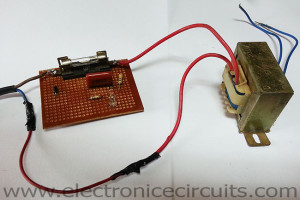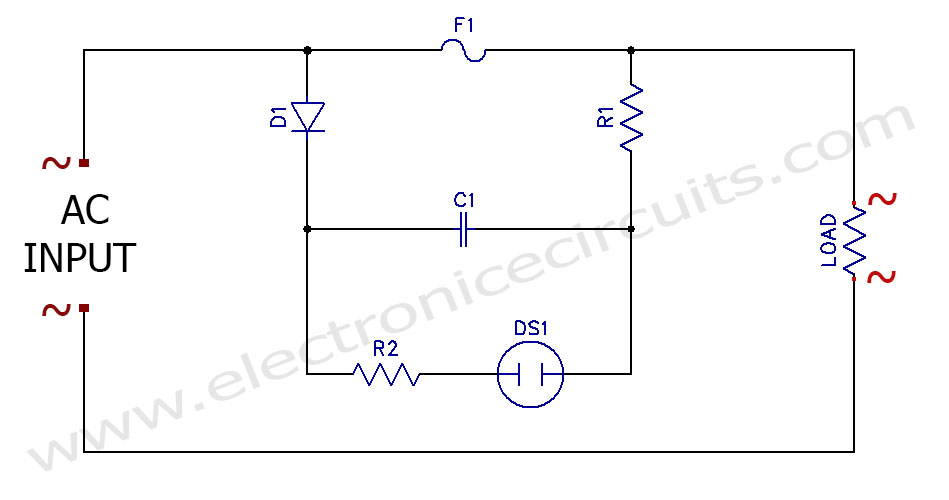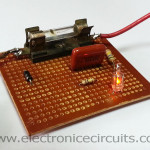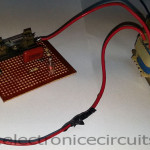
AC Neon lamp filament or semiconductor blown fuse indicator circuit
This simple circuit tells you have a blown fuse without removing the fuse from its holder or semiconductor fuse status. This neon lamp fuse indicator circuit makes neon lamp flash up if a fuse blows or open.
The fault finding point of view there is a disadvantage of the semiconductor type fuses. It is they haven’t filaments to indicate fuse state. because we need a this type fuse indicator.

| PARTS LIST | |
| R1 | 560kΩ |
| R2 | 100kΩ |
| C1 | 0.1µF 400V |
| D1 | 1N4001 |
| DS1 | NEON LAMP |
| F1 | FUSE |
As lone as the fuse is good, the fuse is conductive, so there is no voltage appear between the fuse connection. However if the fuse is open or blown the full supply voltage appears between fuse connections. At this time the neon lamp will start to flash on and off.
C1, R1, R2 and neon lamp act as very low frequency neon oscillator. neon flash rate can be altered by changing the value of C1, R1 and R2.
This blown fuse indicator will work with a wide range of AC supply voltages from 90V to 300V. The neon flash rate also depends on the supply voltage. So you need to change C1, R1 and R2 valves to get desired flash rate.
Above circuit can be used with few milliampere to many ampere fuse.
Please send your ideas, which are very important for our success…


Very useful. Thank you very much
very nice lllmeess u
long time
Unfortunately D1 is placed directly across the AC supply with nothing limiting the current., hence it will fail spectacularly with all the flames and smoke it can muster.
Please fix this!
I fixed my circuit diagram. Thanks!
Interestingly, the cool !!! Bi Volt! it works from 90V to 300V.. Nice!.
Thank
good job